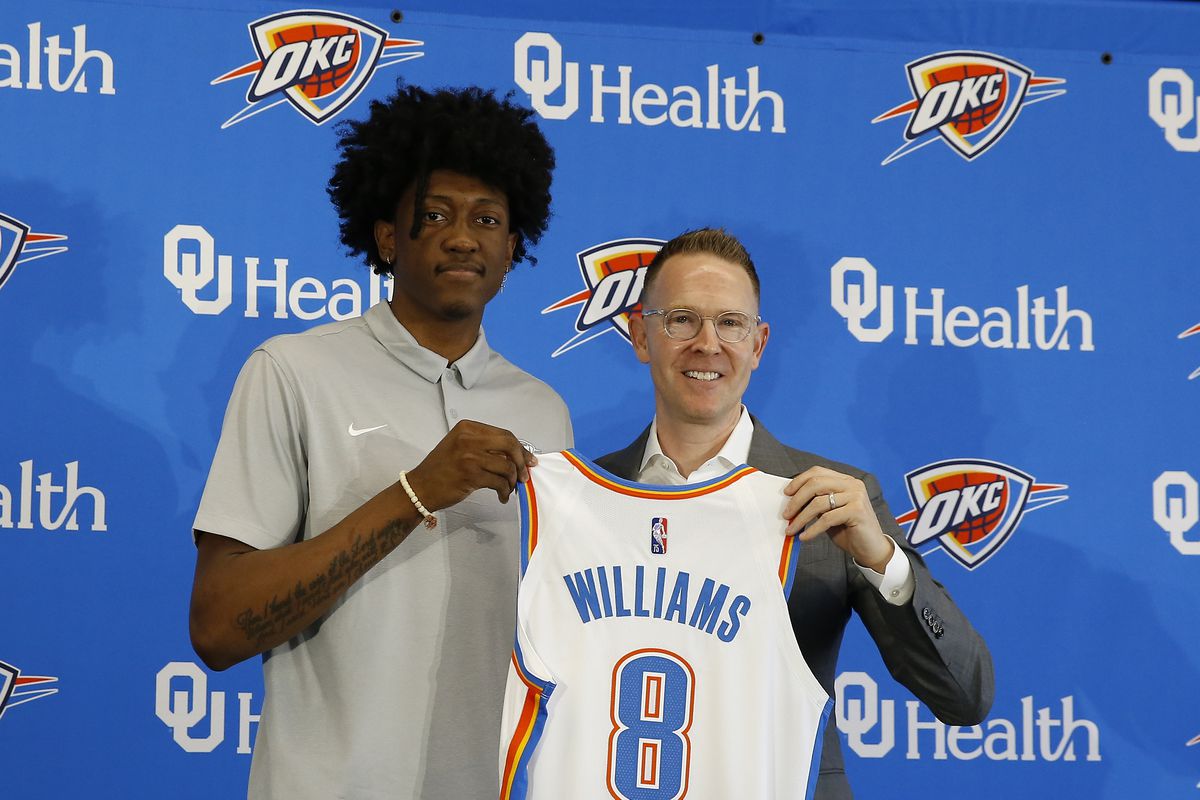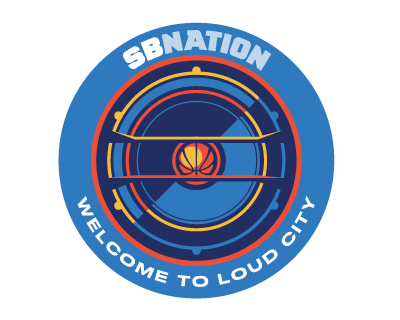
Sam Presti has been in charge of the Thunder for 14 years and is one of the longest serving lead executives in the NBA. Only RC Buford and Pat Riley have spent more time shaping their teams into championship contenders. Presti is an elder statesman at his level, far cry from the boy wonder who was handed the keys to the Seattle Supersonics in 2007.
During this time period, Presti has presided over rebuilding teams, contending teams and teams with a puncher’s chance. In each iteration of the Thunder, his goals were different. With Russell Westbrook and Kevin Durant at the helm, Presti was focused on adding the sort of supplemental pieces who could help the Thunder win a title.
With Westbrook as his lone star, Presti’s aim was to build a team around Russell Westbrook without sacrificing assets that the Thunder did not have. He achieved this goal and unfortunately Oklahoma City fell short in the playoffs.
At the moment, the Thunder are in a rebuilding situation and naturally Sam has focused on long-term sustainability. He is accumulating young players and draft picks to build a team that can contend outside of the usual three-year window.
His vision for the Thunder has changed over the last 14 years and the same can be said for Presti’s ‘operational art’. ‘Operational art’ is a term stemming from Sun Tzu’s Art of War and can be broadly summarised as the use of tactics to achieve a strategic goal.
Presti’s tactical approach is deeply interesting as a Thunder fan. Presti is a GM in a small, undesirable market who built one of the most successful NBA teams in the 2010s before transitioning into an orderly, well-stocked rebuilding job. He has delivered results-wise bar winning a championship despite not enjoying any noticeable natural advantages. How does Presti do that?
It is a question which I have turned over a few times and after analysing the Thunder’s front office operations, the answers are starting to become clearer. While Presti’s tactics have changed, his personality has remained the same. Sam likes to operate discreetly and extract every scrap of value out of a transaction.
Churning the Roster
As the Thunder have progressed their rebuild, Presti has shown a tendency to acquire players or picks with the intent of moving those assets on to improve the roster. In the 2020 offseason, Oklahoma City completed 15 different trades as Sam tore down the roster to rebuild for the future. Players like Ricky Rubio, Danny Green and Kelly Oubre were all on the Thunder for a few days before being dealt again.
Churning the roster and not settling for a simple return allows Presti to extract the most value possible out of a trade. It may just be moving on salary filler to another team for a second round or heavily protected first round pick but those little trades around the margin have been valuable to the Thunder.
The Ousmane Dieng trade is a perfect example of what working the margins can bring to a team. The Thunder spent three first round picks to bring Dieng to Oklahoma but none of those picks belonged to the Thunder. The Nuggets’ first came from the Grant salary dump.
The other two picks came out of a trade done with Houston involving Alperen Sengun. Sam Presti did not want to take a big in the 2021 NBA Draft and was locked onto Tre Mann. The Thunder dealt #16 to bring in two future firsts from Detroit and Washington.
At the time, I criticised those trades as two top-14 protected first round picks did not seem like an adequate return. I will fully admit that I was wrong in this example. Adding those two picks provided Sam Presti with more leverage when it came to making an offer that could not be refused.
Desire for Quiet
As a franchise, Oklahoma City tend to go about business discreetly and as quietly as possible. It is rare to see the Thunder’s front office publicly chase a player like some other teams have done. In the past, the Thunder have been compared to a CIA office in how the team controls information and does not give the game away.
Unlike other GMs in the league, Presti does not seem to have a particularly close relationship with the media. Adrian Wojnarowski’s relationships with Neil Olshey and Sean Marks have both been discussed quite a lot recently.
This is a quid pro quo arrangement between both parties; Wojnarowski releases stories that cast his friends in a favourable light while the executives provides Wojnarowski with up to date, breaking news. This is the complete opposite of how the Thunder does business.
Presti only speaks to the media when he needs and is tight-lipped when it comes to roster-related matters. The silence appears to be a conscious decision on Presti’s part. By being quiet, he can profit from the information gap that exists between him and his colleagues.
The Paul George trade was a prime example of Presti making the most of the silence. Nobody truly knew what was on the table from teams competing to acquire George which allowed the Thunder to get such a strong haul.
Draft Tendencies
Sam Presti’s draft preferences have evolved over the last fifteen years. At one point, it seemed that Sam was intent on taking every hyper-athletic wing who could not shoot. Andre Roberson, Josh Huestis, Terrance Ferguson and Hamidou Diallo all fall into that category.
His approach was driven by the Thunder’s roster needs. Russell Westbrook was a singular offensive force who could carry an offense but his inconsistencies on defense needed accommodation. Russell liked to gamble on defense and his tendencies often opened holes in the Thunder’s defense. Having lengthy wings who could switch on every match-up made some degree of sense.
More recently, we have seen Presti focus more on high feel players from the college ranks and playmakers from the international game. Sam Presti has acquired Josh Giddey, Vit Krejci, Aleksej Pokusveski, Theo Maledon and Ousmane Dieng over the last two years. For all four of them, passing is their greatest strength.
In terms of college players taken by the Thunder, Presti tends to take players from programmes that run NBA-style sets. I will admit that Gonzaga does rely on post-ups from Drew Timme more than an NBA team would but even that has been influenced by professional basketball. Gonzaga used to run a spread post-up action with Nembhard, Chet and Strawther at the perimeter.
Gonzaga, Florida State and Villanova all play a wide-open, spaced out style of basketball which is reminiscent of the pro game. The benefit of taking players from these teams is that they often have a good understanding of team concepts at the next level and slot into the offense without much accommodation.
In his rookie season, Jeremiah Robinson-Earl started at center for the Thunder and led the team on the defensive end of the floor. He anchored the defense and was always reliable. JRE played with a maturity beyond his years and was a big part in the Thunder doing so well on defense during the first half of the season. It took Tre Mann longer to acclimate but he eventually learned how to get buckets efficiently in the NBA.
Presti’s aims in the Draft change constantly but it is evident that he has a type when it comes to drafting players. Sam likes players who have good instincts on the court and know how to be productive within a team basketball setting.
I believe that these three strategies that Presti employs are what allows him to keep the Thunder competitive and find improvement in the roster when there is no easy solution. These tactics should hopefully stand the Thunder in good stead as they move forward into another era of basketball.

Loading comments...